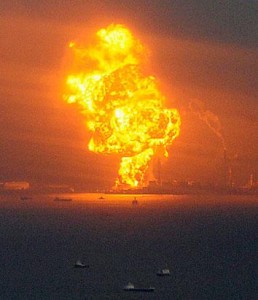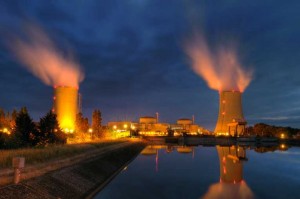 Business and government leaders across Japan are calling for creating “solar farms” on damaged or abandoned land to help wean the nation off nuclear energy and provide economic opportunities for future generations. Katsunobu Sakurai, mayor of Minami-soma, told reporters on Thursday he wants to invite experts from around the world to rebuild his devastated city as a center for what Japanese call “natural energy.” His city of 70,000 residents is about 15 miles from the damaged Fukushima nuclear power plant, where three reactors underwent meltdown after being swamped by the March 11 tsunami. “The land is ruined land but we can see this as a chance to fill them with a huge amount of solar panels in one fell swoop,” said Mr. Sakurai, referring to a 25-square-mile area ruined by muddy, salty seawater from the tsunami and radiation from the plant.
Business and government leaders across Japan are calling for creating “solar farms” on damaged or abandoned land to help wean the nation off nuclear energy and provide economic opportunities for future generations. Katsunobu Sakurai, mayor of Minami-soma, told reporters on Thursday he wants to invite experts from around the world to rebuild his devastated city as a center for what Japanese call “natural energy.” His city of 70,000 residents is about 15 miles from the damaged Fukushima nuclear power plant, where three reactors underwent meltdown after being swamped by the March 11 tsunami. “The land is ruined land but we can see this as a chance to fill them with a huge amount of solar panels in one fell swoop,” said Mr. Sakurai, referring to a 25-square-mile area ruined by muddy, salty seawater from the tsunami and radiation from the plant.
“But such a venture cannot succeed unless the government makes a clear policy, and sets regulations where power companies are required to buy electricity at a specified price.” In April, Mr. Sakurai called for Minami-soma to become a global center for “the brave people of the world” to create industries to transcend the nuclear power generation. “We are in need of a new mindset that is totally different from the one that merely envisions creating a new city on higher ground,” he said. Several corporations and state organizations, meanwhile, are making their own moves to create new energy technologies.
people of the world” to create industries to transcend the nuclear power generation. “We are in need of a new mindset that is totally different from the one that merely envisions creating a new city on higher ground,” he said. Several corporations and state organizations, meanwhile, are making their own moves to create new energy technologies.
Masayoshi Son, president of mobile phone giant Softbank and one of Japan’s wealthiest men, has promised that his company will shoulder most of the $1 billion cost of building 10 massive solar power plants in Japan. Mr. Son says 19 provinces have pledged to join his project to build solar plants to wean Japan off nuclear energy. The provinces include Hokkaido in the north, Nagasaki in the far south, the Tokyo suburb of Saitama, and four central provinces that lost power when the government ordered a cold shutdown of Hamaoka nuclear plant. Mr. Son says the provinces will build solar power farms on abandoned farmland in declining rural areas across Japan. The provinces plan to set up a council to coincide with a meeting of Japan’s National Governors’ Association in July.
“The Hamaoka nuclear power plant had covered more than 80 percent of the electricity needs of our prefecture,” Shizuoka Gov. Heita Kawakatsu told reporters in May. “We cannot help but switch to solar power to compensate for it. This is a big turning point.” About two-thirds of Japan’s aging nuclear reactors are switched off, and most of the active reactors will shut down for scheduled maintenance in coming months. Opposition from local residents and a growing anti-nuclear protest movement will likely make it difficult for private regional monopolies to restart reactors. By Christopher Johnson – Special to The Washington Times

